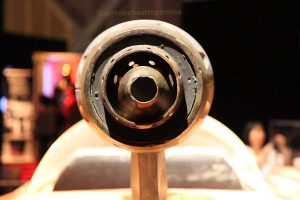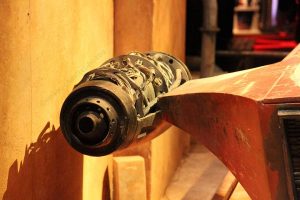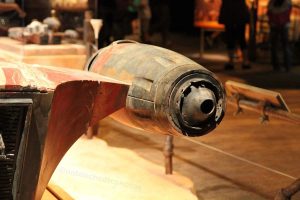China is looking to circumvent expensive and unwieldy U.S. missile defense systems with a mix of stealth, saturation, and smart tactics.
Beijing’s strategic rationale is twofold: ensuring that it can hold U.S. military centerpieces at risk during conflict and retaining credible nuclear strike options.https://www.dianomi.com/smartads.epl?id=3533
On the stealth side, China is developing assets that would better allow its evasion of U.S. satellite-killer capabilities. As the South China Morning Post notes, Chinese researchers see merit in deploying a network of radar-absorbing satellites that would be far more difficult for U.S. anti-satellite systems to detect and destroy. That brings us to the saturation point.
Because if Beijing deploys these new stealth satellites, it will likely do so at scale. The utility of stealth satellites at scale rests in strengthening China’s ability to hit the enemy. The People’s Liberation Army is aware that its ability to land a DF-21D missile onto a U.S. aircraft carrier’s flight deck is dependent on said missile’s ability to stay in contact with its targeting network right up until the final moment. That means the PLA’s missiles retaining access to satellites, with redundant backups, that can survive U.S. missile and sensor-disruption systems. If China can keep the targeting link alive, U.S. aircraft carriers are going to have a big problem operating anywhere near the Chinese fleet. And that’s before we even consider the U.S. military’s least funny joke: the F-35 fighter jet.
That’s just the start. China appears confident that it can play the same stealth game when it comes to hypersonic glide vehicles laden with nuclear weapons.
The South China Morning Post reports on how the PLA intends to use hypersonic glide vehicles to skim the wave of U.S. missile defense systems. Like Russia, China views its strategic nuclear deterrence as an existential priority. And like Russia, China views hypersonic vehicles as its best prospect of penetrating the next generation of U.S. missile defense shields. Again, it’s all about stealth, speed, unpredictability, and scale.
What does this mean for the United States?
Well, the Pentagon should stop planning to fight a 21st-century war with the tactics of a 20th-century war. Washington should also more carefully weigh the cost-benefit analysis of its missile defense strategy. Does it make sense, for example, to invest tens of billions of dollars in a system that is unlikely to hold up to a Chinese stealth-saturation strategy? Or would it be better to invest in terminal phase missile defenses that give individual platforms (aircraft carriers) or population centers (cities) at least some defensive capability. The Pentagon must prioritize those programs that proffer the best return on investment.
Top line: China is innovating with a mind to winning a war against America. Recognizing China’s strategy, the U.S. must adapt accordingly.



















Be the first to comment